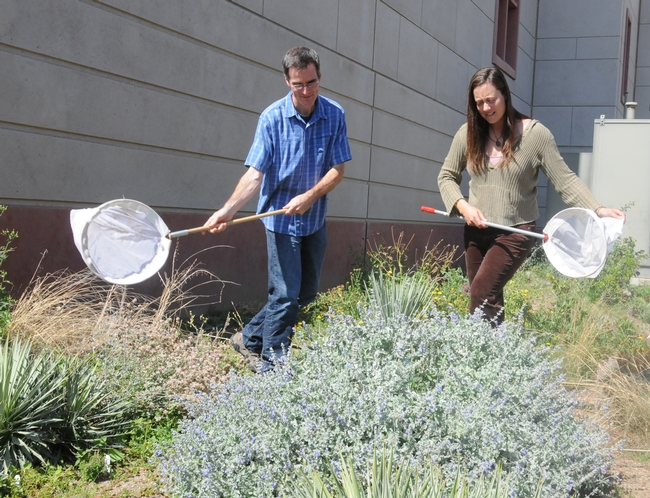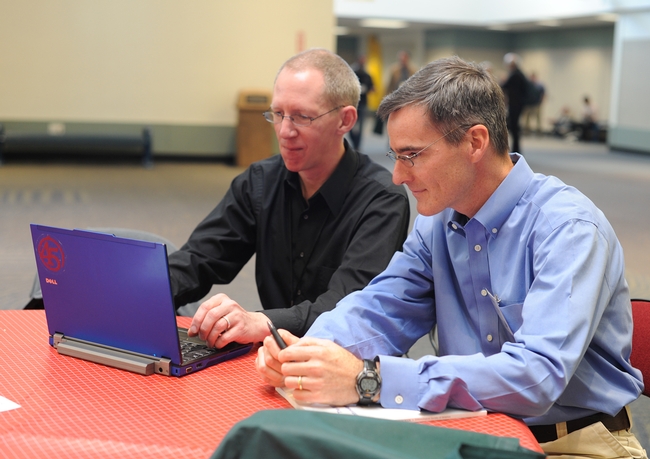Posts Tagged: Mace Vaughan
Protecting the Pollinators
It's good to see so many publications focusing on the pollinator crisis--because that's exactly what it is, a crisis. Writing for the Nature...

Assistant professor Neal Williams and Kimiora Ward, research associate from the Williams lab, collect bees. (Photo by Kathy Keatley Garvey)

Neal Williams (right) and colleague Rufus Isaacs confer at the Entomological Society of America meeting Wednesday, Nov. 16 in Reno. (Photo by Kathy Keatley Garvey)
Seeing Red
It’s triple-digit hot and you’re relaxing in a swimming pool when suddenly you realize you have company. A knat-sized insect with a red abdomen...

Sweat bee
Build It And They Will Come
Build it and they will come. Baseball's “Field of Dreams?” No, a bee nesting block. Think "bee condo." It's an artificial...

This is a bee nesting block built to attract native pollinators. (Photo by Kathy Keatley Garvey)

A female leafcutting bee heads for the bee nesting block. The holes are of different diameters and depths to attract a greater diversity of native bees.(Photo by Kathy Keatley Garvey)

Leafcutter bees are just a few of the native bees that use a bee nesting block. The block faces the morning sun so that bees can warm themselves up to flight temperature. (Photo by Kathy Keatley Garvey)

